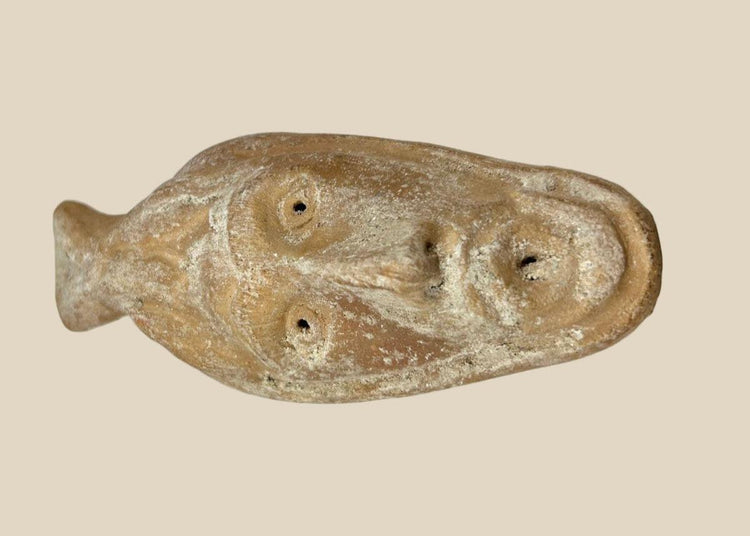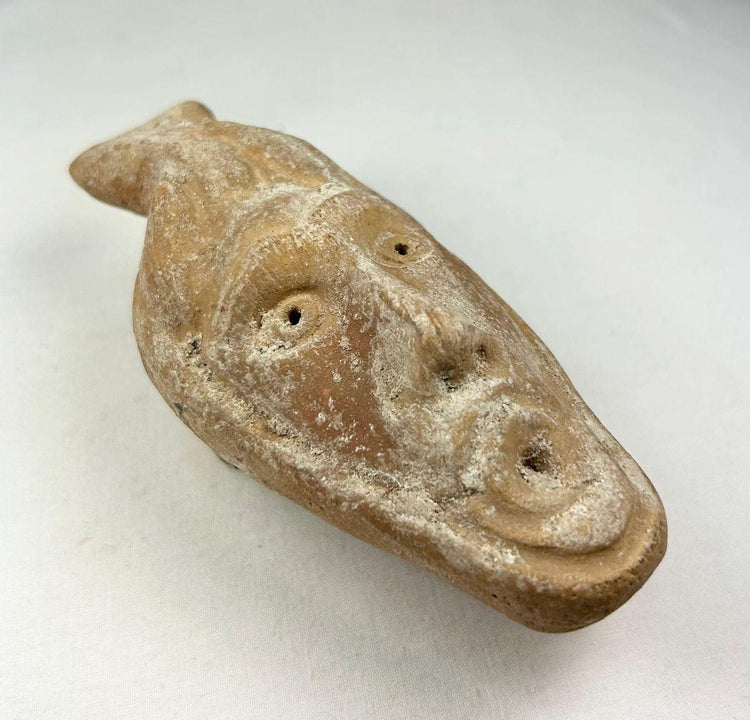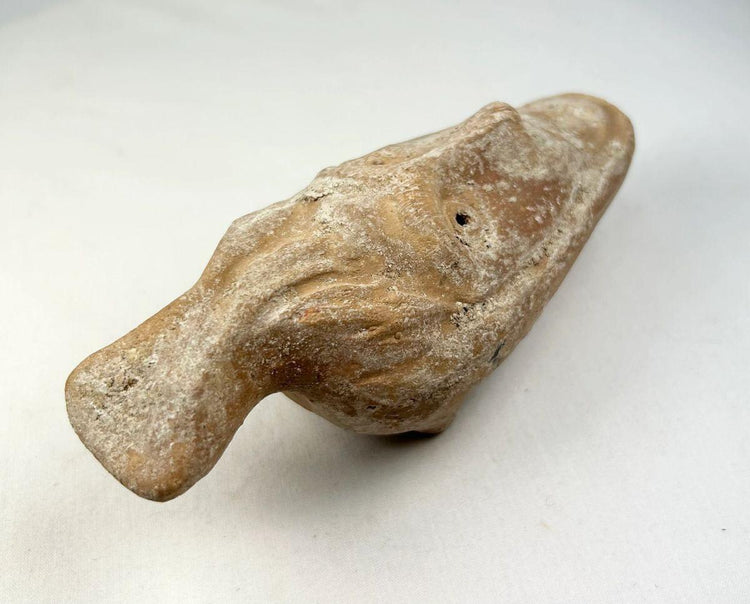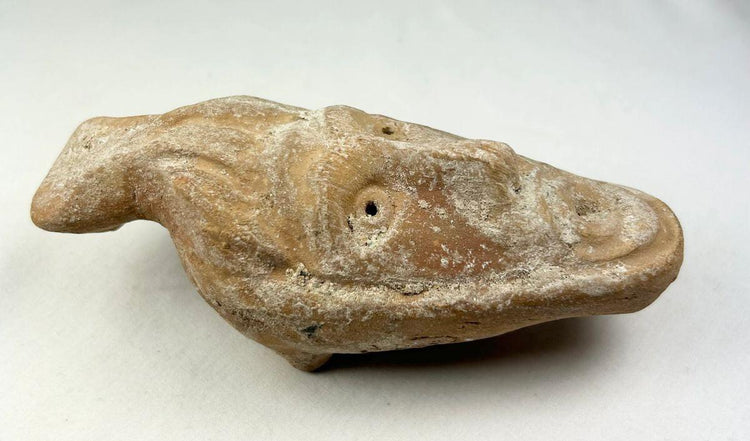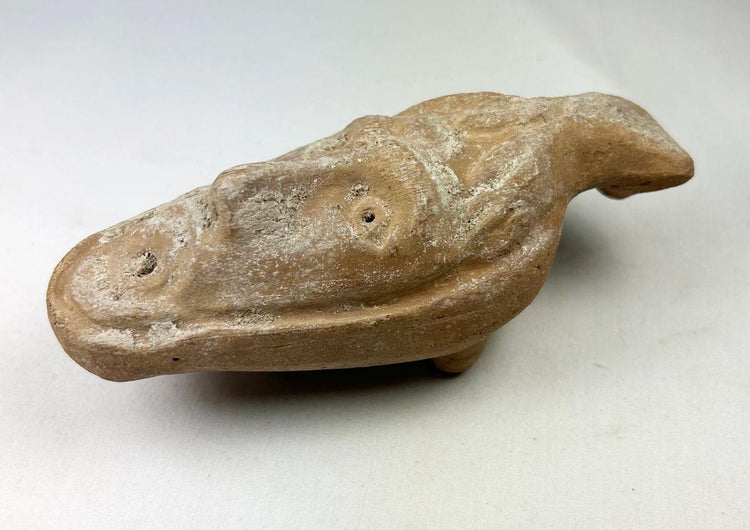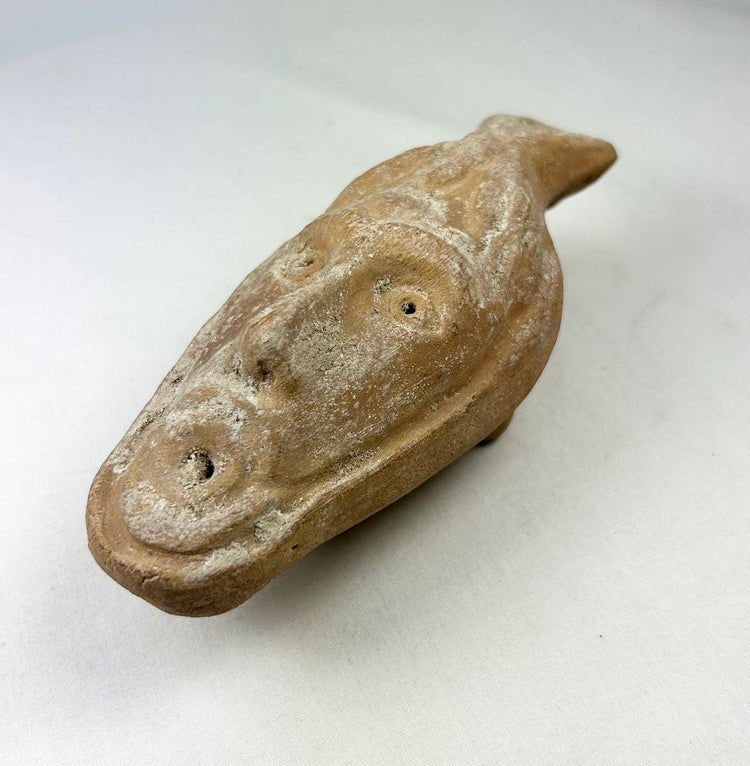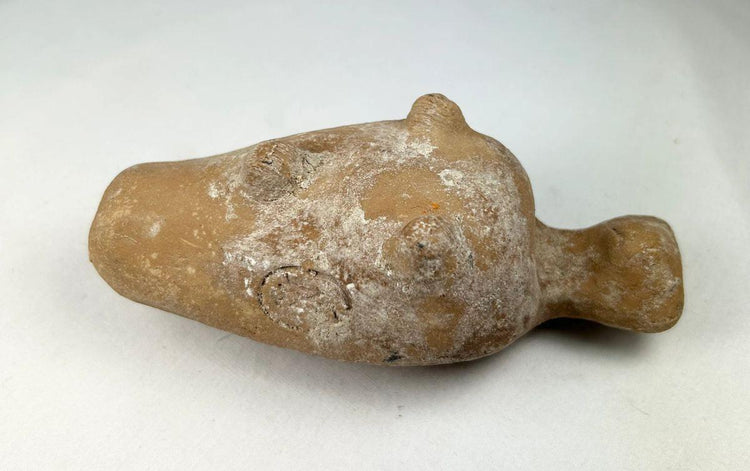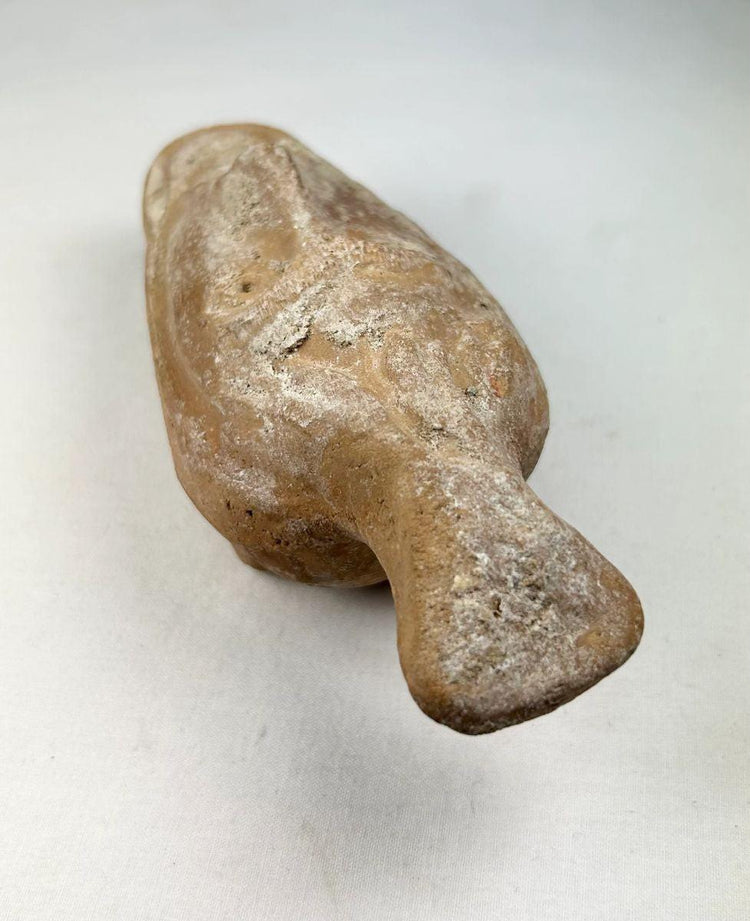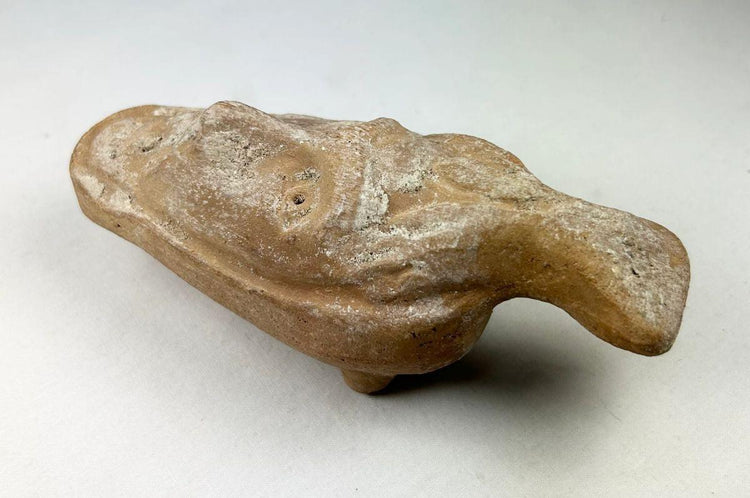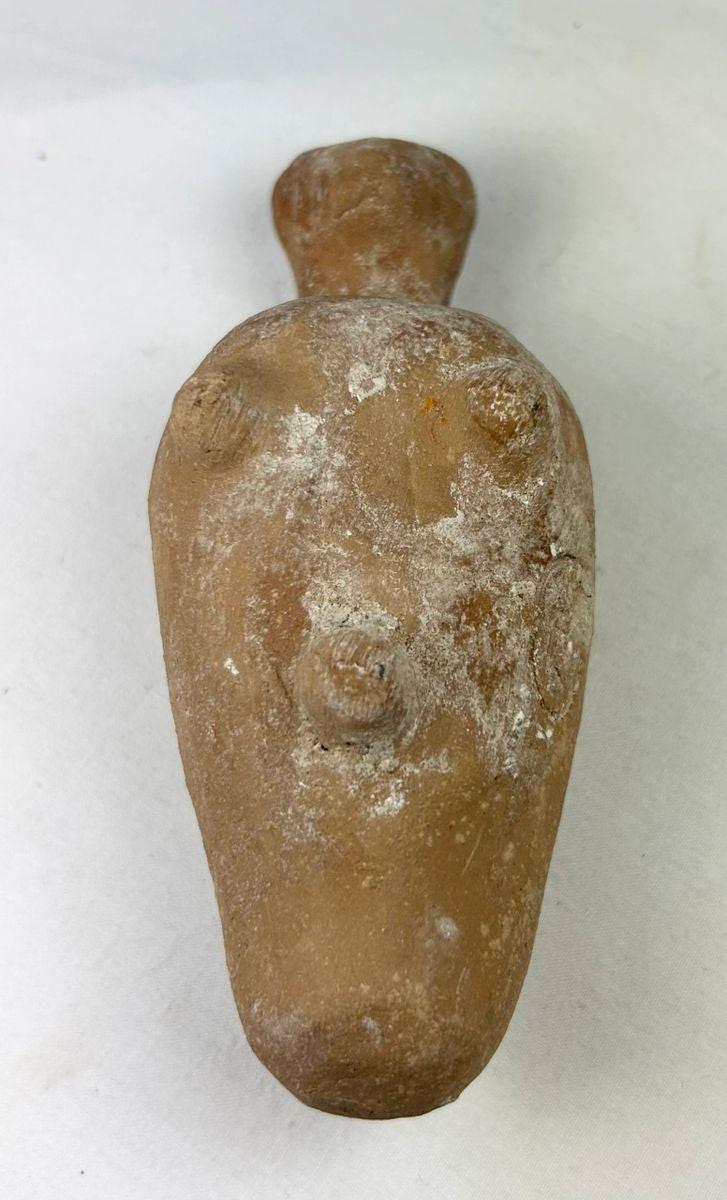Byzantine Terracotta Oil Lamp with Anthropomorphic Face Design | Circa 5th–7thC CE
Description
More
Less
Historical Context & Origin
Region: Eastern Mediterranean
Material: Terracotta (earthenware clay)
Period: Possibly Byzantine era, 5th–7th Century CE
Description
This unusual terracotta oil lamp is molded in the form of a stylized human face. The exaggerated features—arched brow, deep-set eyes, pronounced nose, and open mouth—are rendered in high relief, giving the object a haunting, almost theatrical presence. Piercings at the eyes and mouth suggest both symbolic and functional use, while the top-fill spout conforms to traditional oil lamp design. The lamp rests on three small nub-like feet, adding to its organic, tactile form. Its rare anthropomorphic design may indicate ritual or apotropaic use in addition to simple illumination.
Features
- Molded in the shape of a human face with exaggerated expression
- Wick hole at the mouth, fill hole at the crown
- Three small feet forming the base
- Natural earthen deposits and surface weathering
- No visible repairs or restoration
Cultural Significance
Oil lamps were indispensable in daily and spiritual life throughout the Byzantine Empire. The anthropomorphic rendering of this example suggests connections to folk belief and early Christian symbolism, where light was viewed as both practical and divine. Such pieces may have served as protective household objects or as ritual tools imbued with spiritual meaning.
Condition
Good condition with mineral accretion and surface wear. Minor pitting consistent with age. No cracks or modern restoration detected.
Dimensions (approximate)
Length: 5 in
Width: 2.75 in
Height: 2 in
Age
Possibly 5th–7th Century CE (Byzantine)
Description
Historical Context & Origin
Region: Eastern Mediterranean
Material: Terracotta (earthenware clay)
Period: Possibly Byzantine era, 5th–7th Century CE
Description
This unusual terracotta oil lamp is molded in the form of a stylized human face. The exaggerated features—arched brow, deep-set eyes, pronounced nose, and open mouth—are rendered in high relief, giving the object a haunting, almost theatrical presence. Piercings at the eyes and mouth suggest both symbolic and functional use, while the top-fill spout conforms to traditional oil lamp design. The lamp rests on three small nub-like feet, adding to its organic, tactile form. Its rare anthropomorphic design may indicate ritual or apotropaic use in addition to simple illumination.
Features
- Molded in the shape of a human face with exaggerated expression
- Wick hole at the mouth, fill hole at the crown
- Three small feet forming the base
- Natural earthen deposits and surface weathering
- No visible repairs or restoration
Cultural Significance
Oil lamps were indispensable in daily and spiritual life throughout the Byzantine Empire. The anthropomorphic rendering of this example suggests connections to folk belief and early Christian symbolism, where light was viewed as both practical and divine. Such pieces may have served as protective household objects or as ritual tools imbued with spiritual meaning.
Condition
Good condition with mineral accretion and surface wear. Minor pitting consistent with age. No cracks or modern restoration detected.
Dimensions (approximate)
Length: 5 in
Width: 2.75 in
Height: 2 in
Age
Possibly 5th–7th Century CE (Byzantine)
You May Also Like


























